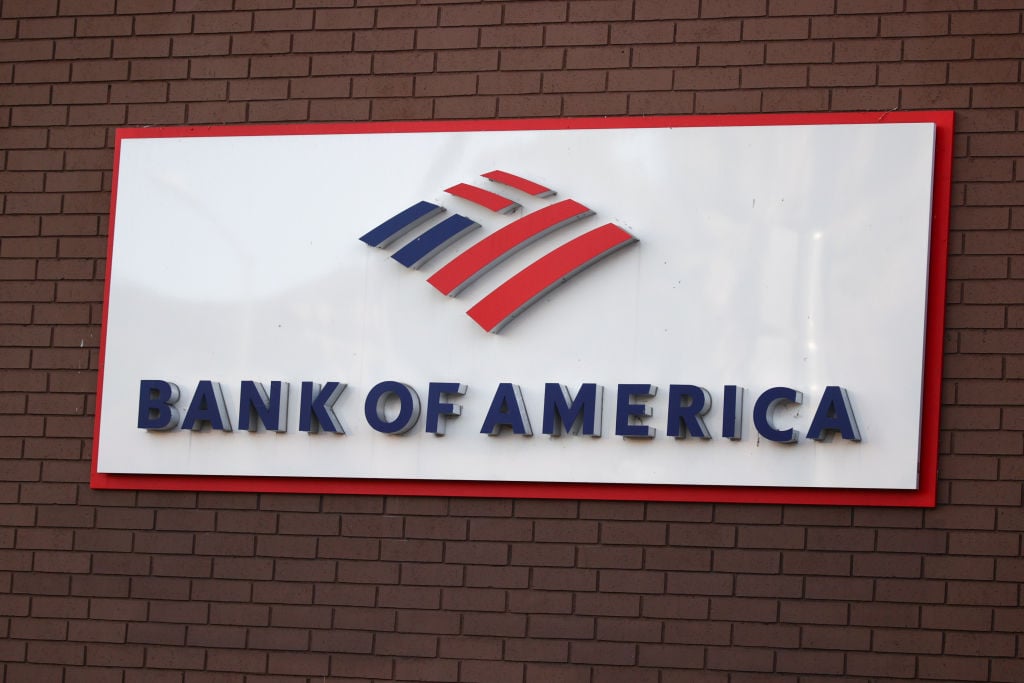My colleague Michael Douglass recently published an article on why he won't buy a single big bank stock, citing their disadvantages against lower-cost online banks. What he says is true: Online banks have lower operating costs as a percentage of revenue than traditional brick-and-mortar banks by a country mile.
In theory, low operating costs allow online banks to be more competitive in making loans at attractive interest rates, while offering higher interest rates to savers, helping them simultaneously win loans and deposits from the big, less efficient banks.
But while online banks like BofI Holding (BOFI +0.58%) and Ally Financial (ALLY 0.30%) may score better than, say, Bank of America (BAC +0.50%) in terms of their operating expenses per dollar of revenue, they score much, much worse when their expenses are compared to the size of their balance sheets.
And it's for this reason I think online banks are likely to put up unimpressive returns relative to their traditional banking peers over almost any sufficiently long investment horizon, particularly in a rising rate environment.
Efficiency ratio failures
The efficiency ratio Douglass employed in his analysis is a go-to ratio for bank stock investors because it measures what a bank spends on noninterest expenses (branches, salaries, ATMs, utility bills, etc.) as a percentage of net revenue. Banks that spend a smaller portion of their revenue on expenses should have an advantage over those that spend more, all else equal.
But the efficiency ratio also has two fatal flaws: It favors banks that make higher-risk, higher-yielding loans, and unfairly penalizes banks for using branches to bring in low-cost deposits. Not surprisingly, credit card issuers, which earn high loan yields and source their funding primarily through high-interest wholesale and online channels, have some of the lowest efficiency ratios. That doesn't mean they're good banks to invest in; it just means they're credit card issuers.
In short, an efficiency ratio is most useful when comparing the same bank to prior periods or comparing competing banks with one another. If you use the efficiency ratio alone to pick bank stocks, you'll end up with a portfolio chock-full of auto lenders, subprime consumer lenders, and credit card companies. It unfairly punishes the prototypical commercial bank, which makes lower-yielding (and safer) loans to businesses.
In my view, the best way to find good banks to invest in is to compare banks based on their expenses as a percentage of their balance sheet, not as a percentage of revenue. When you define efficiency in terms of a bank's net expenses relative to its scale, you see why the big banks have a real advantage over smaller online banks.

Image source: Getty Images.
A better method for analyzing banks
Recognizing that banks ultimately make money with their balance sheets, I like to analyze banks by calculating their net expense burden as a percentage of their liabilities. A bank that funds its balance sheet less expensively can afford to lend at lower interest rates and take less risk to earn the same returns, all else equal.
I use the following formula to calculate the total net cost of a bank's liabilities. (You can also use this formula for deposits instead of total liabilities.)
(Total interest expenses + total non-interest expenses-total non-interest income)/Total liabilities
This formula fixes some of the flaws of a simple efficiency ratio. It recognizes that noninterest expenses (like teller salaries and ATM networks) help a bank generate deposits at a lower interest rate, and that these expenses are partially offset by noninterest income.
A funny thing happens when you use my method to analyze banks -- online banks score worse than traditional banks by a wide margin. That's because online banks spend more money on interest expenses and have fewer ways to generate noninterest income than traditional banks, thus resulting in higher net expenses per dollar of liabilities, the "raw material" of the banking industry.
Here's a table comparing Ally Financial, BofI Holding, and Bank of America over the last three years using my method. It isn't even close -- the big bank wins.
|
Bank |
2017 |
2016 |
2015 |
|---|---|---|---|
|
Ally Financial |
2.88% |
2.68% |
2.79% |
|
BofI Holding |
1.87% |
1.49% |
1.74% |
|
Bank of America |
1.24% |
1.17% |
1.28% |
Data source: SEC filings, calculations by author. Percentages are calculated from year-end figures.
The read here is that online banks Ally Financial and BofI Holding have to earn substantially higher returns on their loans and securities than Bank of America to earn the same return on equity. And because returns and risk are inherently linked, that means banks that spend more per dollar of liabilities have to take more credit risk to earn similar returns.
The low-cost producer can make many more bad loans, waste money putting its name on stadiums, and do various other "dumb things" and yet still produce the same or similar returns as competitors. Low-cost deposits and lots of noninterest income (which offsets noninterest expenses) are the ultimate advantage in banking. A low efficiency ratio can simply be the byproduct of making higher-yielding (and riskier!) loans.
Old banks in tech packaging
At their core, online banks bring in customers by offering high deposit yields, an approach that is neither new nor novel, though investors are seemingly consumed by this "new" innovation.
In the American West, a special class of so-called "industrial banks" use state charters to take in deposits through high-yielding certificates of deposit. They operate out of office buildings, not branches, and as a result, they have extremely low operating expenses, but they pay a high price for their deposits, so they aren't exceptionally profitable.
Ordinary publicly traded banks employ similar business models. In rural New York, for instance, a sleepy one-branch bank by the name of Bank of Utica has more than $823 million of deposits, about eight times the banking industry's average deposits per branch. More than 71% of its deposits come into the bank by way of high-yielding money market accounts and CDs. With an efficiency ratio of 35%, according to regulatory reports, it's one of the most efficient banks in the country (top 1% of its peer group), but you won't hear about it because it lacks the appeal of the online bank story. This family-run bank was founded in 1927.
Online banks make their business model sound new, but paying higher rates to draw in deposits without opening expensive offices predates the online bank account. For as long as banks have been able to compete by offering higher interest rates on accounts (ever since the 1980s deregulation spree), banks have been able to grow their balance sheets without adding branches by enticing customers with high savings yields.
Don't fall victim to recency bias
For more than a decade, virtually all banks have enjoyed low deposit costs because the benchmark interest rate sat at zero. Banks that are good at bringing in deposits had little advantage in a world where every bank was paying virtually nothing to borrow money.
That's changing, and I suspect that as interest rates rise, online banks' deposit costs will rise much faster than traditional banks' deposit costs. After all, the reason most people use BofI Holding or Ally Financial is precisely because they offer a high rate on deposits. Depositors moved to BofI Holding and Ally Financial to get a high return on their cash, and would likely move elsewhere if another bank offered a substantially higher rate.
As rates rise, and the industry's loan-to-deposit ratio increases to a point where deposit markets get more competitive, the gap between deposit costs at brick-and-mortar banks and online banks will only widen, exposing the danger of relying on the efficiency ratio to determine the relative quality of a financial institution.
Say what you want about traditional banks. Maybe it's dumb to pay $12 a month for a savings account that pays 0.01% per year on your deposits. But that's always been a dumb thing to do, and yet the big banks keep getting bigger.
The Wall Street Journal recently reported that 45% of all new checking accounts opened last year were opened at three big national banks, which together had just 24% of all U.S. bank branches. Clearly, there's more to the decision-making process than just picking a bank with the highest yield on a checking account, since nearly half of all new checking accounts were opened at three banks that rank near the bottom for deposit yields.
Yes, online banks spend less on noninterest expenses as a percentage of revenue. That's obvious. But what isn't always immediately obvious is that to keep operating costs low, online banks have to pay a market rate on deposits, which puts them at a disadvantage when interest rates are greater than zero.
If given the choice, I'd take a basket of the big four banks against the online banks over any long-term investment horizon.









